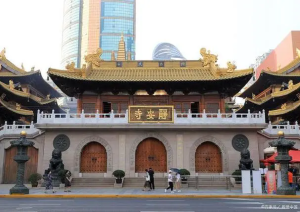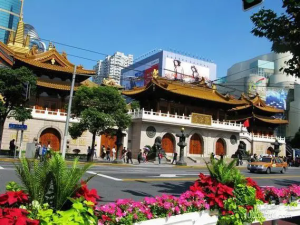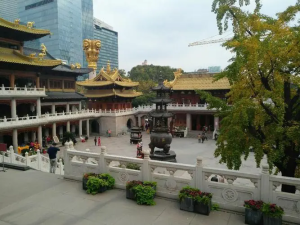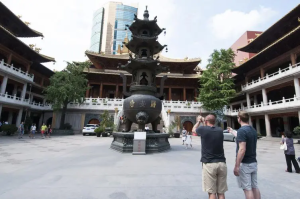Jing ‘an Temple in Shanghai
In the heart of the bustling city of Shanghai stands an ancient temple called Jing ‘an Temple.
It is not only the center of faith, but also a symbol of culture and history, attracting tourists from all over the world with its deep heritage and unique charm.
The mark of history: the vicissitudes of the millennium

The history of Jing ‘an Temple can be traced back to the Ten years of Chiwu (247) in The Three Kingdoms Period, and it was originally named Huudu Chongyuan (Xuan) Temple.
Over the years, the name was changed several times, and finally in the first year of the Northern Song Dynasty (1008), it was given the name “Jing ‘an Temple”.
This ancient temple has witnessed Shanghai’s development from a small fishing village to an international metropolis.
In 1216, in the ninth year of Jiading in the Southern Song Dynasty, the abbot Zhong Yi decided to move the temple to the present site because the original site was near the river bank and vulnerable to floods.
Since then, Jing ‘an Temple has taken deep roots in this land, and has been passed down to the present day through wind and rain.
A gem of architecture: a perfect blend of tradition and modernity

When you enter Jing ‘an Temple, the first thing you see is the resplendent buildings.
The roof is covered with yellow glazed tiles, which glisten in the sun and appear magnificent.
The architectural style of Jing ‘an Temple is a typical imitation of the architectural style before the Ming Dynasty, and the shape of dougong is particularly outstanding. This structure is not only beautiful, but also reflects the wisdom of ancient architecture.
The main buildings, such as the Hall of Great Heroes, the Hall of Heavenly Kings, and the Three Temples, all use traditional wooden structures, and every piece of wood and every brick seems to tell the story of thousands of years.
However, Jing ‘an Temple is not always old-fashioned. While retaining traditional elements, the temple also incorporates modern design ingenuity.
For example, in some corners of the temple, you can find a clever combination of modern art and ancient culture, which not only gives Jing ‘an Temple new vitality.
It also allows every visiting visitor to feel the harmonious coexistence of tradition and modernity.
Cultural treasure: profound Zen, extraordinary art

Jing ‘an Temple is not only a treasure house of architectural art, but also carries profound cultural connotation. The temple contains a large number of Buddhist artifacts and works of art.
Among them, the famous paintings of Bashan people and Wen Zhengming’s original “Pipa Song” long scroll, etc., these precious cultural heritages make Jing ‘an Temple more shining.
Every Buddhist festival or traditional festival, Jing ‘an Temple will hold a grand celebration.
Believers come from all over the world to participate in rituals, chanting sutras, praying for blessings and other activities to experience the breadth and depth of Buddhist culture. These festivals not only enrich the spiritual life of believers, but also serve as an important window for Shanghai residents and visitors to understand Buddhist culture.
In addition, the Jing ‘an Temple also holds regular Buddhist lectures, scripture explanations and meditation experiences.
These activities provide a platform for believers and visitors to gain an in-depth understanding of Buddhist culture, so that people can find a quiet space in their busy lives and experience the mystery and connotation of meditation.
The charm of scenery: The pure land of Zen in the city

Although Jing ‘an Temple is surrounded by high-rise buildings and heavy traffic, once you enter the temple, you can immediately feel a kind of isolation and tranquility.
The inner courtyard is tree-lined, the fragrance is overflowing, and the crisp bell and the light smell of incense are interwoven together, forming a beautiful picture. Here, people can temporarily forget the troubles of the world and immerse themselves in the world of Zen.
Whether it is peach blossoms in spring, cicadas chirping in summer, yellow leaves falling in autumn, or white snow in winter, Jing ‘an Temple has a different charm.
Every season, every moment of Jing ‘an Temple is like a vivid picture waiting for people to discover and appreciate.